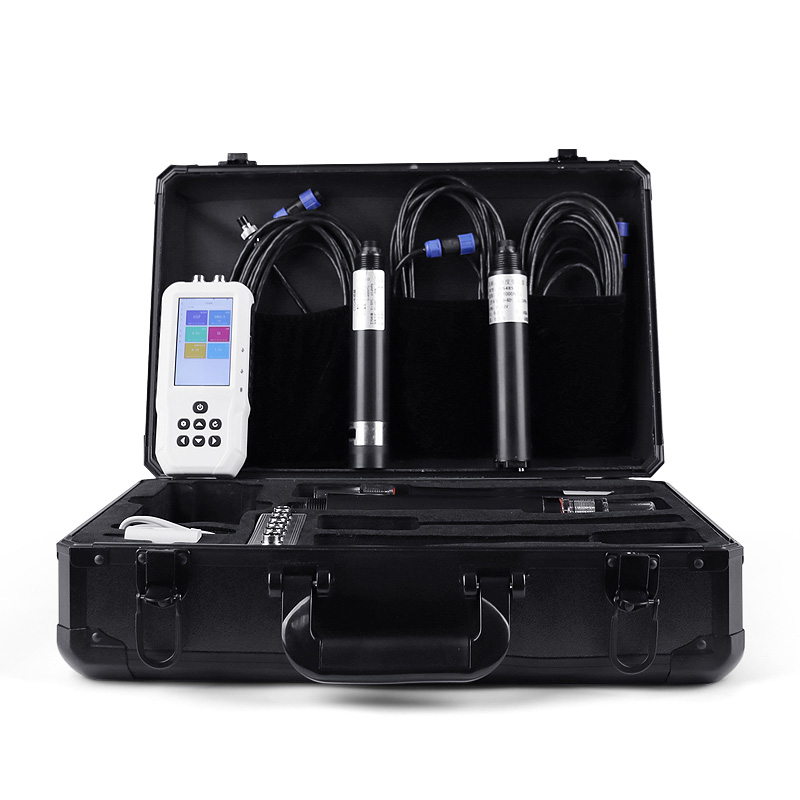Shandong Fengtu IOT Technology Co., Ltd
Sales Manager:Ms. Emily Wang
Cel,Whatsapp,Wechat:+86 15898932201
Email:info@fengtutec.com
Add:No. 155 Optoelectronic Industry Accelerator, Gaoxin District, Weifang, Shandong, China

Sales Manager:Ms. Emily Wang
Cel,Whatsapp,Wechat:+86 15898932201
Email:info@fengtutec.com
Add:No. 155 Optoelectronic Industry Accelerator, Gaoxin District, Weifang, Shandong, China

Model:FT-SS1S
Brand:fengtu
1. COD Analyzer Product Introduction
COD Analyzer is used for the rapid detection of COD in water quality in the fields of pollution detection and tracing, environmental emergency monitoring, laboratory analysis and so on.SS1S model COD Analyzer is an electrode method water quality analysis instrument that uses fully digital electrode detection to detect water quality COD and turbidity parameters.The instrument is equipped with the self-developed ftiot operating system, which is simple to operate, has stable performance, accurate measurement, and wide detection range.It has a built-in high-capacity rechargeable lithium battery, making it convenient for users to conduct water quality testing at any time in the field or laboratory.
2.COD Analyzer host parameters
| Charging input voltage | 4.5V-5.5V |
| Charging current | <2A |
| screen size | 3.5 inches |
| screen resolution | 480*800☆ |
| screen interface | MIPI DSI☆ |
| USB interface | 2 (Supports external expansion of mouse, keyboard, 4G, etc.)☆ |
| Type-C | 1 (Supports external expansion of mouse, keyboard, 4G, etc.)☆ |
| RS485 | 2 (Supports Modbus, json, asc input, etc.) |
| External sensor supply voltage | 12V |
| External sensor supply current | 1A |
| operating system | ftiot (based on Linux-5.4)☆ |
| CPU | 2*Cotex-A7, 650Mhz☆ |
| RAM | 512M DDR3☆ |
| Flash | 8G-64G |
| OpenGL | ES 2.0☆ |
| Wifi | support |
| 4G | Optional |
| button | support |
| capacitive touch screen | support |
| software architecture | B/S☆ |
| web access | Support☆ |
| MTP mode | Support☆ |
| Multiple terminal login | Support☆ |
| IPV6 | Support☆ |
| Sensor communication method | RS485, TCP, UDP, HTTP☆ |
| Data forwarding method | RS485, TCP, UDP, HTTP☆ |
| Remote SSH | Support☆ |
| remote debugging | Support☆ |
3.COD Analyzer sensor parameter configuration
| serial number | name | Measuring range | principle | Measurement accuracy | Configuration | Remark |
| 1 | temperature | 0~50℃ | High-precision digital sensor | ±0.3℃ | ||
| 2 | pH | 0~14(ph) | Electrochemistry (Salt Bridge) | ±0.1PH | ||
| 3 | ORP | -1500mv~1500mv | Electrochemistry (Salt Bridge) | ±6mv | ||
| 4 | Conductivity | 0~5000uS/cm,0~10000uS/cm | contact electrode method | ±1.5% | ||
| 5 | TDS | 0~20μS/cm (TDS 0-10mg/L) | contact electrode method | ±1.5% | ||
| 6 | salinity | 0-2.5ppt or 0-80ppt | contact electrode method | ±0.05ppt or ±1ppt | ||
| 7 | Sludge concentration | 0~20.000g/L | scattered light method | ±5% (depending on sludge homogeneity) | ||
| 8 | Turbidity | 0~40NTU (low turbidity) | scattered light method | ±1% | Optional | |
| 0~1000NTU (medium turbidity) | scattered light method | ±1% | ||||
| 0~3000NTU (high turbidity) | scattered light method | ±1% | ✔ | |||
| 9 | Dissolved oxygen | 0~20mg/L | fluorescence lifetime method | ±2% | ||
| 10 | Ammonia nitrogen | 0~100mg/l | Ion selective electrode method | ±1mg | ||
| 11 | suspended solids | 0~2000mg/L | scattered light method | ±5% (depending on sludge homogeneity) | ||
| 12 | Residual chlorine | 0~5.00mg/L | Ion selective electrode method | ±5% of reading | The accuracy is best when the flow rate is 0.42m/s-0.85m/s. | |
| 13 | Chloride ions | 0-3500.0mg/L | Ion selective electrode method | ±5% | ||
| 14 | Total hardness | 0~1000.0mg/L | Ion selective electrode method | ±10% of reading | ||
| 15 | cod | 0~500mg/L | UV254 absorption method | ±5% | ✔ | COD and chlorophyll are equipped with automatic cleaners to prevent biological adhesion and avoid light window pollution to ensure long-term monitoring is still stable; the automatic cleaning time and cleaning frequency can be set, and the power consumption is 0.7W |
| 16 | Chlorophyll | 0~400ug/L | Fluorescence method | R2>0.999 |
The history of human measurement of wind is extensive, evolving from ancient wind vanes and anemometers to modern high-tech equipment. Initially, people measured wind by observing wind vanes and anemometers. During the Renaissance, scientists invented more precise anemometers. In the 18th century, t...
Automatic radar water level rainfall monitoring system has the advantages of simple structure and low cost, which is widely used in water conservancy projects. At present, the number of automatic radar water level rainfall stations is increasing and the degree of automation is improving, and there h...
Traditionally, wind speed and direction measurements have relied on mechanical anemometers, but with the development of ultrasonic technology, people have begun to explore its application in wind speed measurements.The Ultrasonic Anemometer utilizes the properties of ultrasonic waves propagating thr...
In the report of the Twentieth National Congress, "modernisation in which human beings live in harmony with nature" was elevated to an important connotation of Chinese-style modernisation. In the new era, China's ecological civilisation is faced with the challenge of addressing climate...